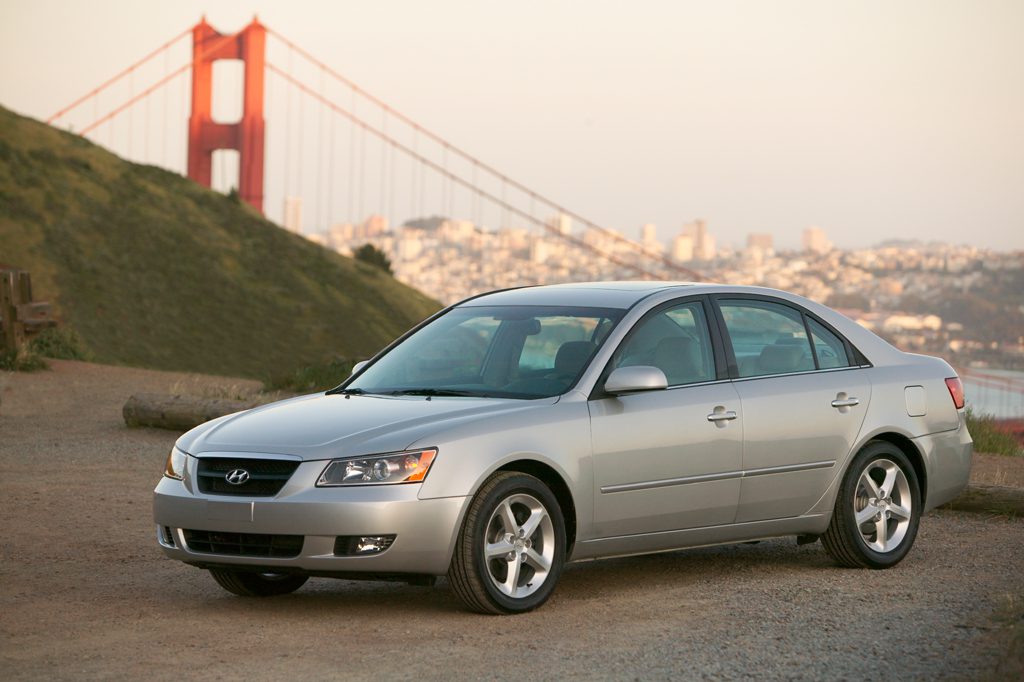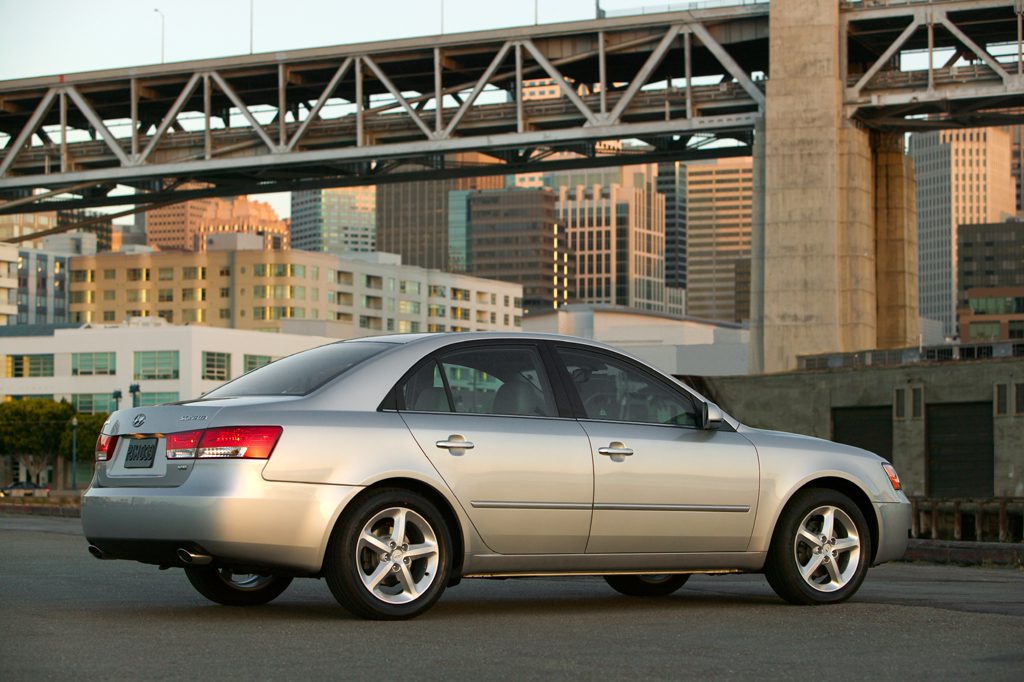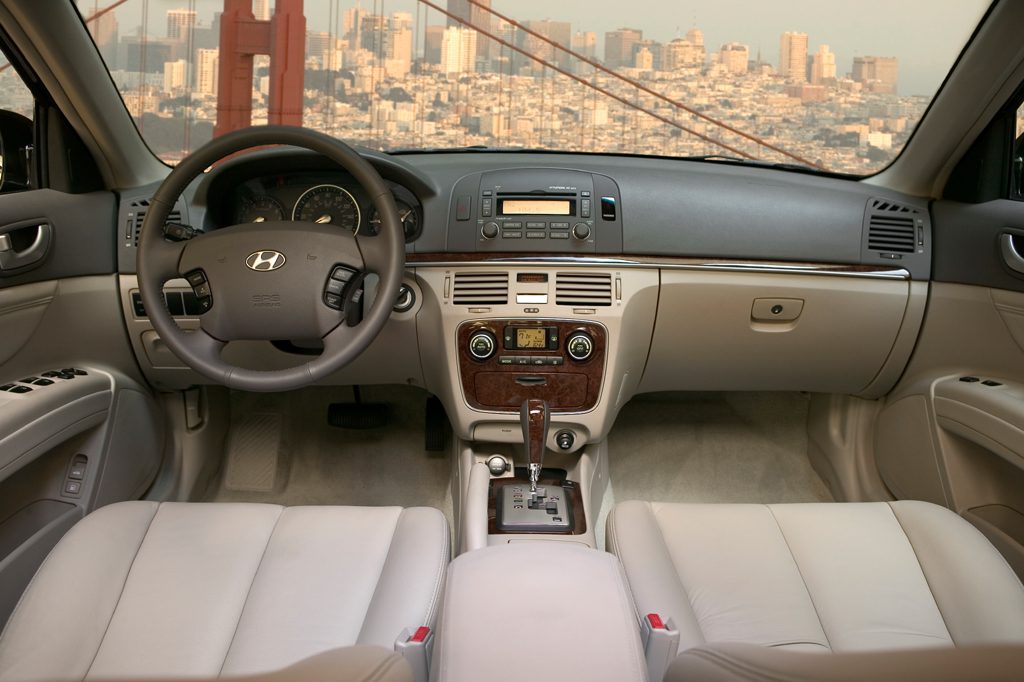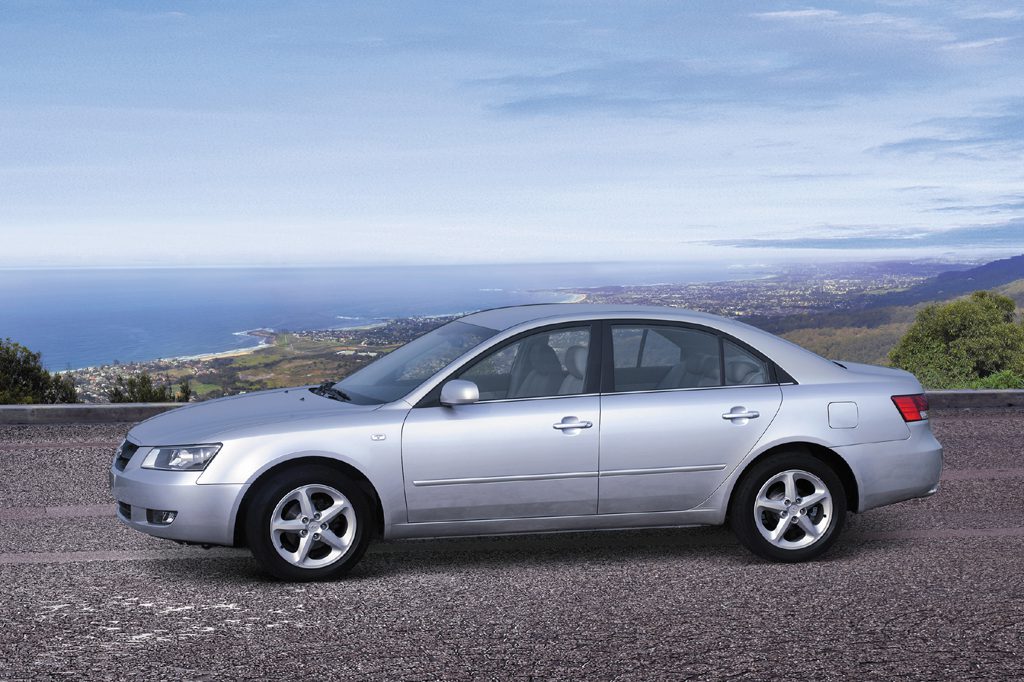| Midsize car; Built in South Korea, USA |
|
|
| Good condition price range: $6,100 – $15,000* |

2006 Hyundai Sonata

2006 Hyundai Sonata

2006 Hyundai Sonata

2006 Hyundai Sonata
| Pros: |
|
| Cons: |
|
Dynamically, Sonata cannot match the class-leading Honda Accord in terms of engineering. It’s not as refined as a Camry, or as sporty as an Altima. Even so, its power, refinement, safety features, and value pricing make it a Recommended midsize pick. Sonata’s strength hails from its clever blend of comfort, roominess, mainstream design, and everyday performance at an appealing price. Kudos go to Hyundai for making curtain side airbags, ABS, and stability control standard on every Sonata, not just the more-costly top-line models. Because Sonatas depreciate faster than a Camry or Accord, they can be tempting used-car choices.
Overview
Hyundai’s midsize sedan was redesigned for 2006 with fresh looks, more power, and standard curtain side airbags. Sonata’s redesign added 1.2 inches to wheelbase, 2.2 inches to overall length, and about 2 inches to height. Passenger space grew in every dimension, with the biggest gain being 1.2 inches of additional rear-seat leg room. Trunk space grew by 2.2 cubic feet, to 16.3.
Sonata continued with a base four-cylinder GL model, uplevel GLS in four-cylinder or V6 form, and top-line LX V6. Both engines were new. The 2.4-liter four-cylinder made 162 horsepower, versus 138 for the previous 2.4-liter. The V6 grew from 2.7 liters with 170 horsepower to a 3.3-liter with 235 horsepower.
Transmission choices included a five-speed manual or optional four-speed automatic for the four-cylinder; a five-speed automatic was standard with the V6. Traction and stability control, antilock four-wheel disc brakes, front side airbags, and head-protecting curtain side airbags were standard on all Sonatas.
The GL sedan rode on 16-inch steel wheels, the GLS on 16-inch alloys, and the LX on 17-inch alloys that were optional on the GLS V6. The LX also included heated leather seats, a power driver’s seat, and automatic climate control.
Like all Hyundai models, the Sonata came with a 5-year/60,000-mile bumper-to-bumper warranty and a 10-year/100,000-mile powertrain warranty. Competitors to the front-wheel-drive Sonata included the Chevrolet Malibu, Honda Accord, Nissan Altima, and Toyota Camry.
Yearly Updates
| 2007 Sonata For its second season in Hyundai’s lineup, the redesigned Sonata showed little change. This year’s lineup consisted of the four-cylinder GLS, plus V6 SE and Limited models. No more GL or LX sedans were offered. |
| 2008 Sonata Both the 162-hp 2.4-liter 4-cylinder engine and the 234-hp 3.3-liter V6 were now available on all three trim levels: GLS, SE, and Limited. |
| 2009 Sonata The 2009 Sonata received revised suspension tuning, a redesigned interior, and freshened exterior styling. The 2.4-liter 4-cylinder gained 13 hp to 175, while the V6 gained 15 hp to 249. Previously, 4-cylinder models used a 4-speed automatic; for ’09, they got the dame 5-speed automatic as the V6 models. Sonata GLS and Limited models got firmer suspension tuning. A navigation system with voice recognition was a new Limited-exclusive option. |
| 2010 Sonata The 2010 Hyundai Sonata was largely unchanged. |
